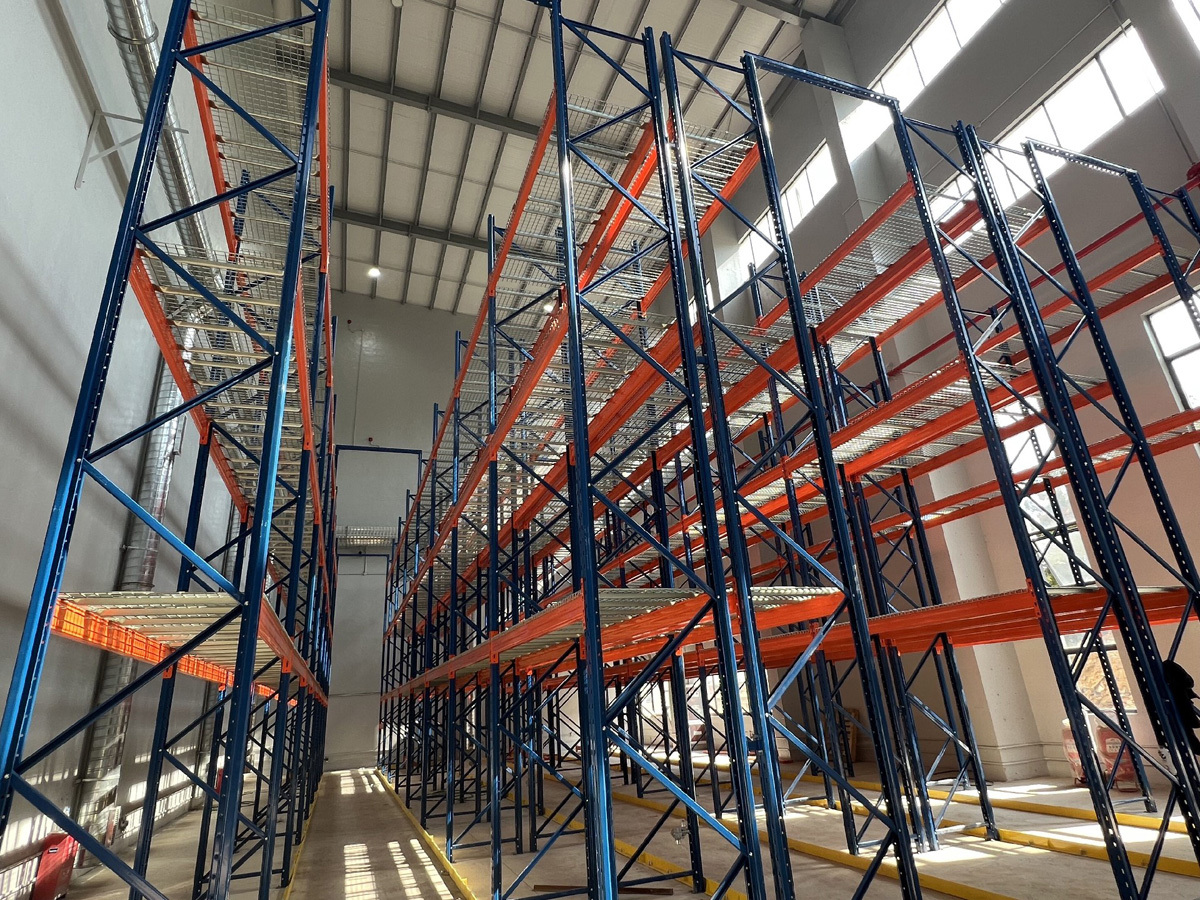Fabricant professionnel d'espaces de stockage
Quels types et caractéristiques de produits trouve-t-on habituellement sur les étagères ?
Mots clés :
Date de publication :
2025-08-14
In the logistics and retail industries, shelves are a core tool for storage and management, and their design directly affects the efficiency and safety of goods placement. Different types of goods need to be matched with specific functional shelving systems to maximize space utilization, accessibility, and cost control. The following is a classification of common types of goods and their corresponding shelf characteristics to help readers quickly understand how to choose the right storage solution based on product characteristics.
I. Cargo Types and Shelf Selection by Weight
1. Light Goods
- Typical examples: paper, stationery, small electronic components, etc. These items are small in size and light in weight, with low load-bearing requirements.
- Applicable shelves: Light-duty shelving or drawer-type shelves. The former adapts to different sizes of goods through adjustable shelves; the latter is convenient for frequent access, especially suitable for office or convenience store scenarios. For example, the snack area in supermarkets often uses this type of shelf, which is both beautiful and convenient for customers to choose and buy on their own.
- Advantages: Strong flexibility, can make full use of vertical space, and reduce unit storage costs.
2. Medium Goods
- Typical examples: home appliances, household goods, clothing bags, etc. These goods have both a certain volume and weight, and need to take into account both stability and operability.
- Applicable shelves: Medium-sized shelves or loft-style shelves. Medium-sized shelves have a stable structure and are suitable for manual handling; while loft-style shelves can significantly increase the volume ratio of the warehouse by building a multi-layer platform, which is often used for multi-category mixed storage in e-commerce warehouses.
- Features: Supports layered management, facilitates label identification and inventory counting, and reduces the risk of cargo backlog.
3. Heavy Goods
- Typical examples: machinery and equipment, auto parts, steel pipes and other industrial raw materials. This type of item has a high density and high load, which poses a demanding challenge to the strength of the shelf.
- Applicable shelves: Heavy-duty beam-type or pallet racks. They are made of thickened steel and are used with forklift operations to achieve mechanized loading and unloading to ensure the safe stacking of bulk cargo. For example, the parts warehouse of automobile factories generally uses this structure to withstand tons of pressure.
- Note: It is necessary to regularly check the tightening of bolts to avoid deformation or collapse caused by overloading.

II. Exclusive Solutions for Special-Shaped Goods
1. Long Strip Materials
- Typical examples: wood, aluminum profiles, cable reels, etc. Traditional flat-bottom shelves are difficult to fix such items, which are prone to rolling and shifting.
- Applicable shelves: Cantilever racks. The extended cantilever is like an "arm", which can accurately hold cylindrical or bar materials to prevent them from falling; some models are also equipped with non-slip rubber pads to further enhance stability. The pipe area of the building materials market is a model of this design.
- Extended application: Combined with hook accessories, it can also hang irregular objects such as chains and steel wire ropes.
2. Pallet Unitized Goods
- Typical examples: whole boxes of beverages, standardized parts pallets. This type of standardized packaging is conducive to batch turnover, but occupies a large ground area.
- Applicable shelves: Drive-in or fluent shelves. Drive-in allows forklifts to penetrate into the roadway for dense storage, which is suitable for seasonal stocking; fluent shelves use inclined rails to automatically slide the goods to the front end, shortening the picking path, and are widely used in the first-in, first-out management of cold chain warehouses.
- Efficiency improvement: With RFID tags, automatic inventory updates can be realized, reducing manual counting errors.
3. Dangerous Goods and Precision Instruments
- Typical examples: chemical containers, laboratory instruments, etc. This type of cargo involves safety and compliance issues, and needs to be stored separately and marked with warning information.
- Applicable shelves: Special cabinets with protective fences or closed storage shelves. The former prevents liquid leakage from contaminating other goods; the latter controls access through locks to protect the anti-theft needs of high-value equipment. Laboratories usually use anti-static material shelves to protect sensitive components.
- Regulatory compliance: Must comply with fire safety standards and be kept away from fire and high temperature areas.
III. Shelf Innovation under the Trend of Intelligence
With the development of Internet of Things technology, smart shelves are gradually becoming popular. For example, rotary shelves automatically retrieve high-frequency goods through motor drives, reducing the labor intensity of store employees; mobile shelves flexibly reorganize the layout through track systems to adapt to dynamically changing inventory structures. These new technologies not only optimize space allocation, but also predict replenishment cycles through data analysis, becoming an important support for smart warehousing.
Reasonable planning of the shelf system needs to comprehensively consider cargo attributes (such as weight, shape, and danger), access frequency, and warehouse environment. Enterprises should regularly evaluate the efficiency of existing facilities and introduce modular design or automated equipment for upgrades when necessary. For start-ups, renting adjustable modular shelves is a cost-effective transition solution; while large manufacturers are more suitable for customized heavy-duty shelves to meet long-term strategic needs.
Produits phares
Articles connexes

